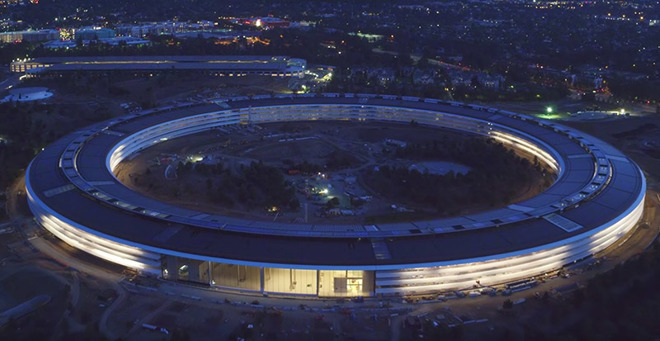 3502
3502
 2017-07-05
2017-07-05

Tourists stroll by, whipping out their iPhones to get a photo. New businesses move in. And real estate prices go up even more.
Apple’s new home in Cupertino — the centerpiece being a $5 billion, four-story, 2.8 million-square-foot ring that can be seen from space and that locals call the spaceship — is still getting some final touches, and employees have just started to trickle in. The full squadron, about 12,000 people, will arrive in several months.
But the development of the headquarters, a 175-acre area officially called Apple Park, has already helped transform the surrounding area.
In Sunnyvale, a town just across the street, 95 development projects are in the planning stages. The city manager, Deanna J. Santana, said she had never seen such action before. In Cupertino, a Main Street Cupertino living and dining complex opened in early 2016. This downtown enclave includes the Lofts, a 120-unit apartment community opening this fall; small shops; and numerous restaurants and cafes.
Other local businesses are also gearing up in anticipation. A Residence Inn at Main Street Cupertino, expected to open in September, has been slightly customized to meet the needs of Apple employees. Guests will have access to Macs and high-speed internet connections, said Mark Lynn, a partner with Sand Hill Hotel Management, which operates the hotel and consulted with Apple about what its employees need at a hotel.
Tech companies are nothing new for Cupertino. Apple has called the city home for decades, and Hewlett-Packard had a campus in Apple’s new spot, employing 9,000 people. The surrounding towns have been remade as well in the last decade, as giant tech companies have transformed Silicon Valley’s real estate into some of the most expensive in the country.
But city officials and residents say this project is like nothing they’ve seen before. It is even bringing tourists.
Onlookers snap pictures of the spaceship from the streets. TV helicopters circle above. Amateur photographers ask residents if they can stand on driveways to operate their drones, hoping to get a closer look at Apple Park.
“I just say, ‘Hey, go ahead,’” said Ron Nielsen, who lives in Birdland, a Sunnyvale neighborhood across the street from the spaceship. “Why not?”
Drone operators want that coveted aerial shot while pedestrians want to get an eyeful of the curved glass building before the headquarters become hidden by a man-made forest.
Source: New York Times